Phytoplasma
Aster yellows is a devastating disease that can affect more than 300 plant species. And that only includes broad-leaved plants! Aster yellows also affects grain crops like wheat and barley.
Without effective management, the disease can rapidly spiral out of control.
Aster yellows is found throughout North America, Europe, and much of the world’s temperate zones.
Unfortunately, it’s not a treatable condition.
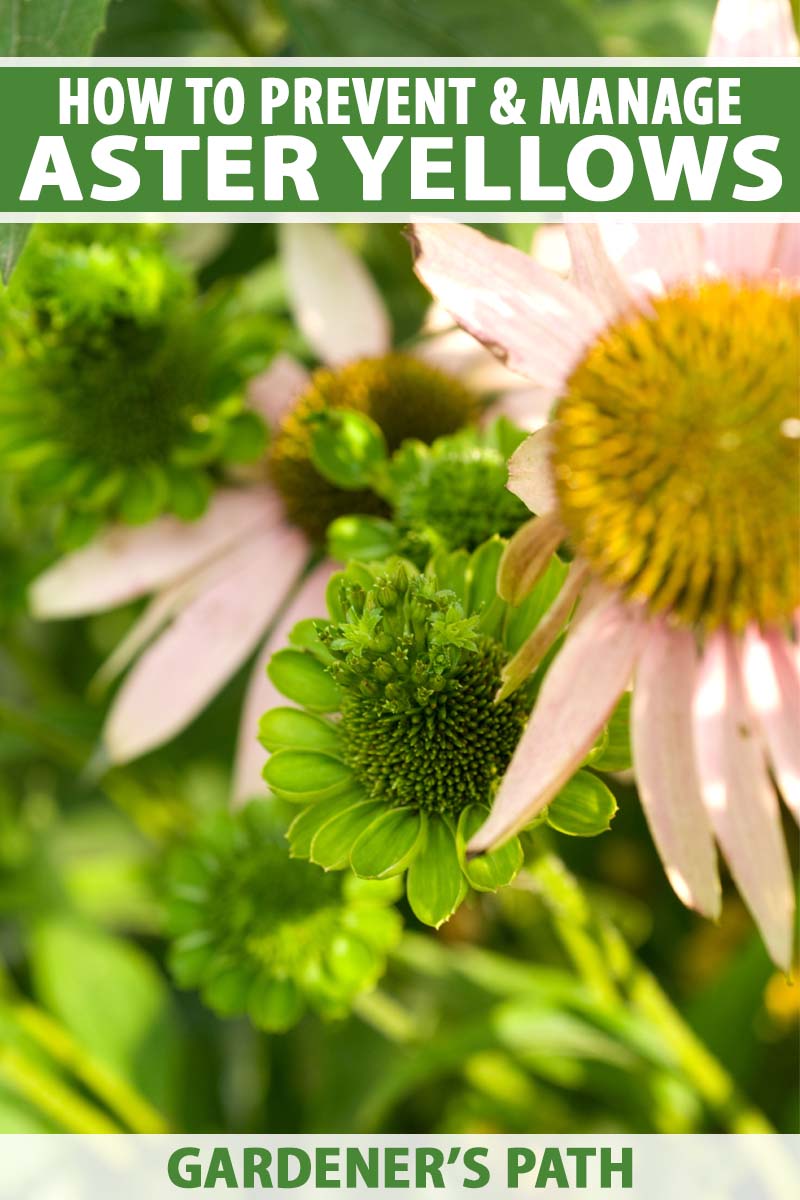
We link to vendors to help you find relevant products. If you buy from one of our links, we may earn a commission.
The best thing to do with an infected plant is to purge it from your garden, so the disease will not spread.
Read on for ways to prevent your plants from becoming infected with this pernicious organism, and manage it if it does occur.
What You’ll Learn
What Is Aster Yellows Disease?
Aster yellows is caused by microscopic organisms called phytoplasmas that are very similar to bacteria.
Your plants would not be threatened by this disease, were it not for the aster leafhopper (Macrosteles quadrilineatus). As its name suggests, this is a lively insect that hops from plant to plant, spreading the disease.
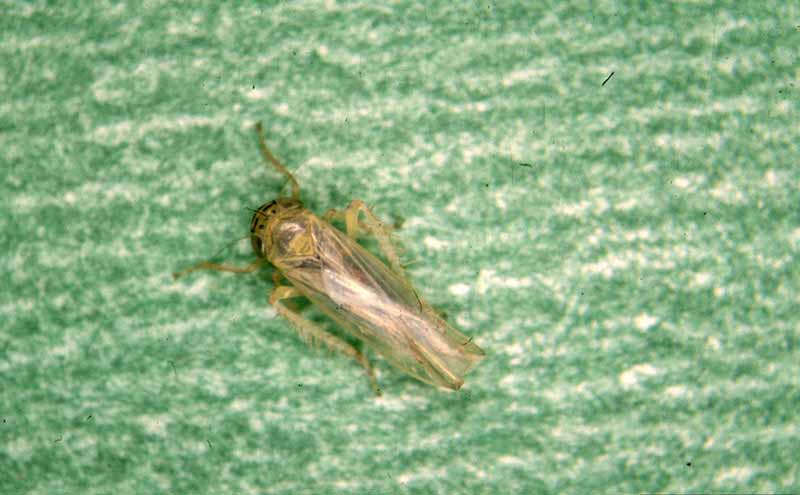
The pathogen responsible is found in the sap of infected plants. When the insect feeds, it sucks up this phytoplasma, transmitting it to nearby plants. The leafhopper can cause infection in just 1-3 weeks and transmits aster yellows every time it feeds for the rest of its life.
Once in the plant, the phytoplasma spreads throughout the entire plant from the root to the flowers. It will take a while for you to realize that your plants are infected, since they typically don’t start showing symptoms for 10-40 days after infection.
While the organism that causes aster yellows does not kill its hosts (unless they are young), it disfigures them so badly that you will no longer want the plants in your garden. If you grow susceptible vegetables, your crop will be damaged.
Symptoms of Aster Yellows
This disease gets its name from asters, since they are one type of plant on which aster yellows shows strong distinctive symptoms. The daisy-like flowers can be transformed into grotesque structures.
For example, aster, daisy, coneflower, and chrysanthemum flowers can have tufts of deformed leaves in them or in place of them. Another common symptom is leaves that turn yellow, while their veins remain green.
Other symptoms include stunting, abnormally bushy growth, new leaves that turn yellow, and twisting or curling of the foliage. In addition, flowers may not produce seed.
Symptoms May Vary
To make things even more difficult, this pathogen produces different symptoms on various types of plants.
Carrot roots can be hairy and bitter, while the inner leaves of lettuce can be twisted, and any of the leaves may show tan or pink spots. The disease is often called “purple top” in potatoes, because the foliage frequently turns purple.
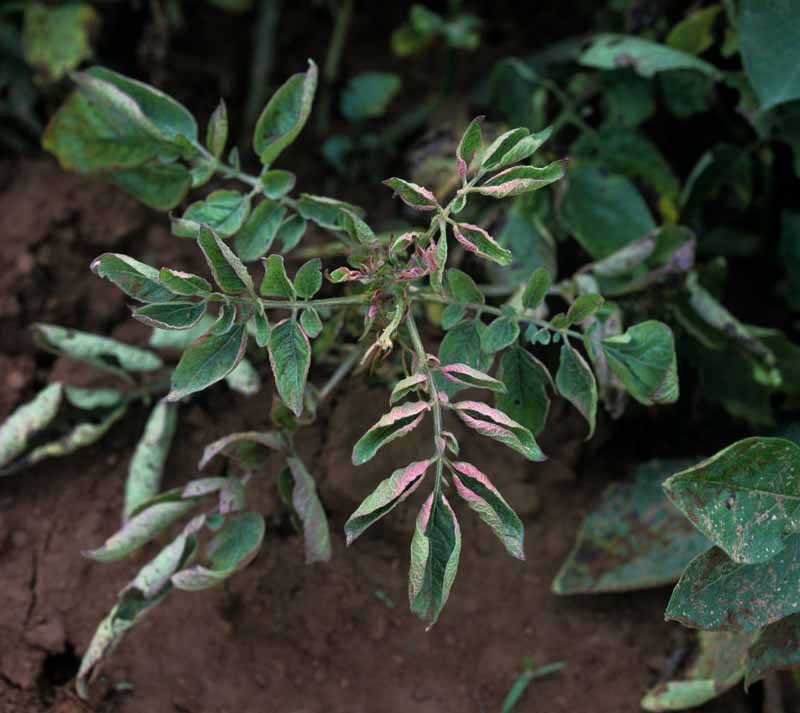
The symptoms are more noticeable in hot weather, and plants can be infected in cool weather without showing any symptoms. This is particularly unfortunate, since the disease can spread widely in cool and wet summers.
Other factors that can cause variations in symptoms include the age and/or size of the plant when it was infected. Plants that are infected when they are small tend to be stunted and have different leaves that can have rosettes or are narrower than healthy leaves.
Factors That Can Cause Similar Symptoms
Not every plant that looks deformed is infected with aster yellows.
Damage from herbicides can also present these symptoms. This is particularly true when plants have been treated with Weed ‘n’ Feed, a combination fertilizer and herbicide commonly used on lawns to tackle broadleaf weeds.
Witches’-broom, a deformity caused by parasitic plants, can produce similar symptoms.
And coneflowers can be attacked by eriophyid mites that cause tufts of small distorted flower parts that sprout from the cone.
Aster Leafhoppers Love to Travel
The leafhoppers that transmit this disease cannot survive cold winters, like what gardeners experience in Minnesota (although their eggs can survive in the upper Midwest). However, brutally cold winters do not lead to their demise.

Within North America, the insects travel to the Gulf of Mexico, where populations build to high levels in grain fields in Missouri and Arkansas.
After overwintering there, they will fly into the upper atmosphere, where storm systems can blow them hundreds of miles north to plague northern gardeners.
In some years, infected leafhoppers arrive early in spring, even before the local insect population has had a chance to become infected. However, given the vagaries of the weather, in other years they are not a problem.
Hot Weather Can Inhibit the Disease
Fortunately for gardeners in hot climates, hot temperatures inactivate the pathogen in both the leafhopper and infected plants. Temperatures of 88°F for 10-12 days are required to limit the growth of the phytoplasma.
How to Manage Aster Yellows
There is no treatment for this disease. The first and most critical thing to do is purge any infected plants from your garden, and destroy all plant matter. This will prevent them from being a source of phytoplasma for the leafhoppers to spread.
Control Weeds
The phytoplasma can survive northern winters in the roots and crowns of infected perennials, including weeds.
Many weeds can harbor this pathogen, so it’s important to remove them from your garden, lawn, and surrounding areas.
You should focus on dandelions and plantain, since they are such common hosts.
Consider Less Susceptible Types of Plants
If aster yellows is a persistent problem in your garden, you can plant alternate types of flowering plants.
Plants that are not susceptible to this disease include:
- Cockscomb
- Storkbill geranium
- Impatiens
- Flowering tobacco (Nicotiana)
- Salvia
- Verbena
Control Insects
While purging the leafhoppers from your yard may seem like an excellent solution, this can be difficult to do – unless you are growing susceptible plants on a large scale.
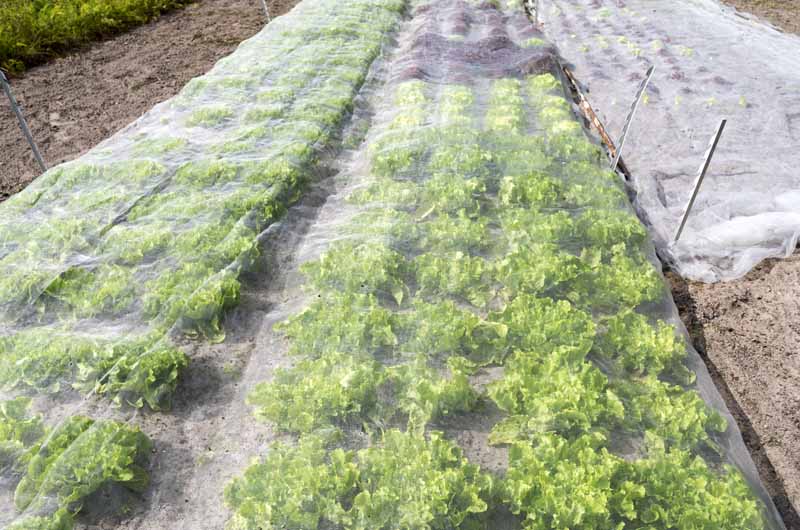
If you know you are likely to have a problem, you can plant crops like lettuce under floating row covers to keep the insects away.
Another option used by some farmers is to put strips of aluminum foil between the rows. This serves to confuse the leafhoppers, who are then less likely to land on your crops.
Aster Leafhoppers Leave Misshapen Plants in Their Wake
Unless you live in a very hot area, your plants in the aster and composite family are vulnerable to the insidious disease aster yellows.
However, the disease will not spread unless leafhoppers carrying the pathogen are on the loose in your garden. If you know they are a problem, you can take measures to prevent them.
If you have grotesque misshapen flowers, you will need to quickly remove these plants from your garden to prevent the disease from spreading.
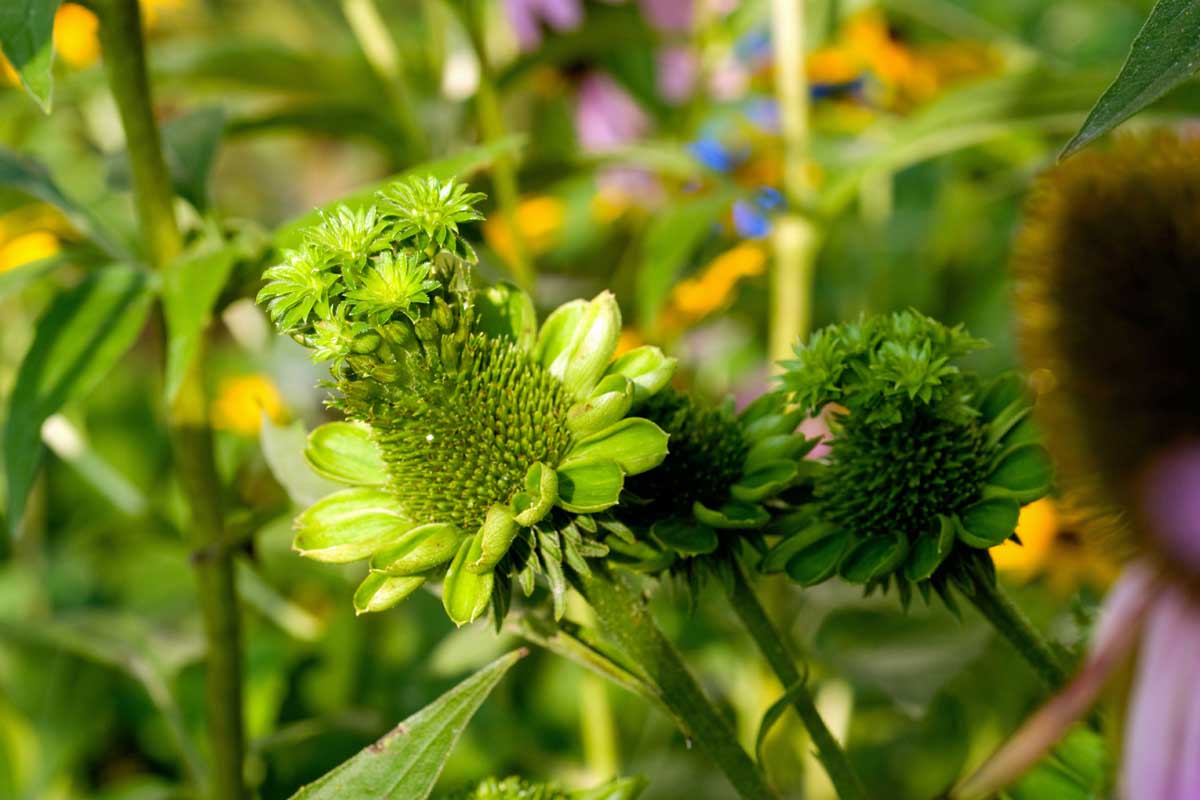
Have you encountered aster yellows in your garden? Were you able to keep it from spreading? Let us know how you fared in the comments.
And read on for more common diseases and pests of garden plants including:
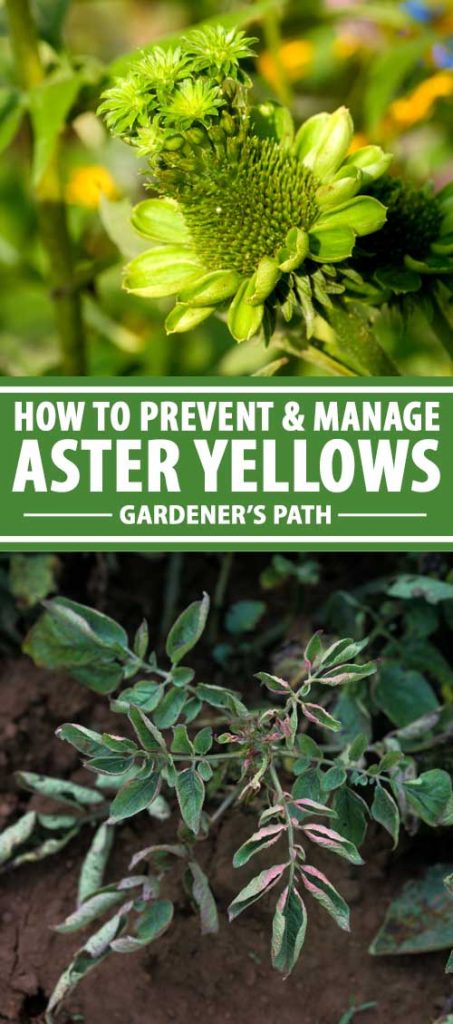

I have just pulled an echinacea infected with asters yellow. I have never seen it before and am worried about the others planted nearby! Most of the resistant flowers are annuals. As it’s July, I will just have to live with the bare spots in our garden. Very sad.
Hi René,
I’m so sorry to hear that you had to pull your Echinacea. That must have been depressing.
I don’t think there is much you can do to protect the other flowers in your garden. I was wondering if spraying them with insecticide could help, but the experts say that it won’t make a difference. You did the right thing by removing it, though, and hopefully that will protect your other plants. I wish you the best with them!
My coneflowers developed aster yellows about 3-4 weeks ago. I had never heard of it before, but I noticed the new blooms on my coneflowers were green and misshapen and the leaves turned upward and were dark brown and crunchy. I did a Google search to find out what was happening and immediately after reading about it, I started pulling the coneflowers from my yard. I used a garden fork to lift each plant out of the yard and carefully put them into trash bags, also disposing of all the soil that was attached to the roots. Can you answer… Read more »
Hi Pam, I’m so sorry to hear about your coneflowers and Rudbeckias. That sounds just heartbreaking. It really is a hideous disease. To answer your questions, 1) If you got all of the roots, it should be safe to plant. The organism that causes the disease can’t survive in the soil, which is about the only good thing. 2) This is a more difficult question to answer. Left to itself, the disease stays put in the plant. The problem is the leafhoppers that spread it. They come and go very quickly, and once they harbor the organism, they transmit it… Read more »
Thank you, Helga, for writing back. It has been sad watching plants develop the symptoms and having to pull them out and throw them away. One symptom I’ve noticed that hasn’t been mentioned in any of the reading I’ve done is the leaves curl inward, turn dark brown, and become hard and crunchy. Does that sound like asters yellow to you? I’ve definitely had the misshapen flowers.
Hi Pam,
Thank you. Writing back was the least I could do in response to your comment about the loss of so many plants. That does sound very sad.
I had to do some research, but the leaves of infected plants do curl inward sometimes. I’m not sure about the symptom of becoming hard and crunchy. That can be a problem from virus infections.
I wish you the best with the rest of your plants. It sounds like you have a large garden.
I have just learned that my large native lantana has this disease. It was totally new to me and I’ve been gardening for over 45 years. Time to dig it out.
Hi Joy,
I’m so sorry to hear that. It sounds really upsetting.
I hope that by doing so, you can prevent the disease from spreading in your garden.
Hi
I’ve noticed my young cosmos plants have started to turn yellow. Not all of them but 3 or 4. Its been really wet virtually all of May so far. Could this be the reason? Or have they got aster yellows some how. Please help
Hello William –
I would hesitate to diagnose aster yellows at this point. There is no indication of leafhopper activity in the form of disfigured foliage.
Wet weather can cause oversaturation, which in turn causes the roots to become waterlogged, and foliage to turn yellow.
We are at the mercy of the weather, however, if you find that the garden is not draining well, you can address this by mixing some sand into the soil, and raising the plants up onto soil mounds.
I have something wrong with hydrangea, black eyed Susan and phlox. Aster yellows??
I have 9 different varieties of echinacea in my large perennial flower garden and i wonder if you can tell me what might be wrong with them. I live in zone 9b and we have had temperatures in the high 90s for nearly two months now. The first and largest flowering show of my cone flowers were spectacular but after that the very smaller side branched flowers began to have only the cones on the flowers but no flower petals. The plant leaves are all healthy – no curling in or turning brown or yellow and no deformed leaves whatsoever.… Read more »
Please could you upload a picture so we can take a look? Thanks!
I just pulled the coneflowers in my garden that had aster yellows. Now I’m looking to the rest of my plants that may have it. My wild bergamot is doing something strange. It LOOKS exactly like lemon balm, but I know it’s not. But it’s growing it’s flowers in “tiers”, sometimes 5-6 of them! The flowers and leaves look paler and thinner than I would have expected bergamot to be. I’ve emailed the seed producer (Prairie Moon Nursery) for their input. I don’t want to pull what I don’t have to! (My asters are also look stunted and deformed…photo of… Read more »
Hi Emily –
The photos show symptoms like those of aster yellows, however, the eriophyid mite can cause similar ones. We recommend taking ample photos, removing and discarding affected plant material in a sealed trash bag, and contacting your local agricultural extension for a firm diagnosis.
Also, sanitize all pruning equipment and gloves after use.
hi helga, thank you for this information. i have been gardening on my property for 36 yrs, and about 3 yrs ago, i discovered the horrible affliction of aster yellows. im in PA. wondering which states had more of a problem with it in the past. this is the first time i have had to deal with anything like this.it sickens me to say that i have to dig out about 70% of all plants on my property. it includes a well-established, native meadow, in its fifth year, which i put in myself, spent hundreds of hours working on, and… Read more »
Hi Adrienne, I am so sorry to hear about this. I don’t think your feelings are melodramatic, I would feel the same way! It’s devastating to lose something you’ve put so much time, money, and heart into. Good luck with the work and I hope that you’re able to turn things around soon.
thanks, kristine. just seeing your comment now. this summer has been especially hot, and it seems like some of the plants in my meadow are looking better, so maybe the heat helped eradicate the AY.
My coneflowers and others seem to all have this. Very sad. I have had wonderful visits by pollinators and raised many monarchs the last couple years and my garden was all native MO. No pesticides of course. Thank you for the article. Awaiting my milkweed delivery and starting over.
Aster yellows is no fun, I’m sorry you’re going through this, but hopefully the new garden will thrive!
So I am curious…can the disease spread through pollinators? I find it interesting this deisease is popping up and I have NEVER had it in my gardens until this year. I feel withh all yhese people planting flowers that are “native” is part of the issue.
Hi, I wonder if it is possible that AY can infect dahlias? The plant is big, the flowers looks ok but the stems are a bit distorted. I have two plants in a 50 liters pot. I wouldn´t have given it a thought if it wasnt for this moment when I removed some petals from the backside of one flower. As far as I can see there is nothing wrong with the rest of the flowers on that plant. The other plant is not as distorted as this first one
Hi there, Annika! It’s absolutely possible that it’s aster yellows. They’re one of the more commonly infected species.